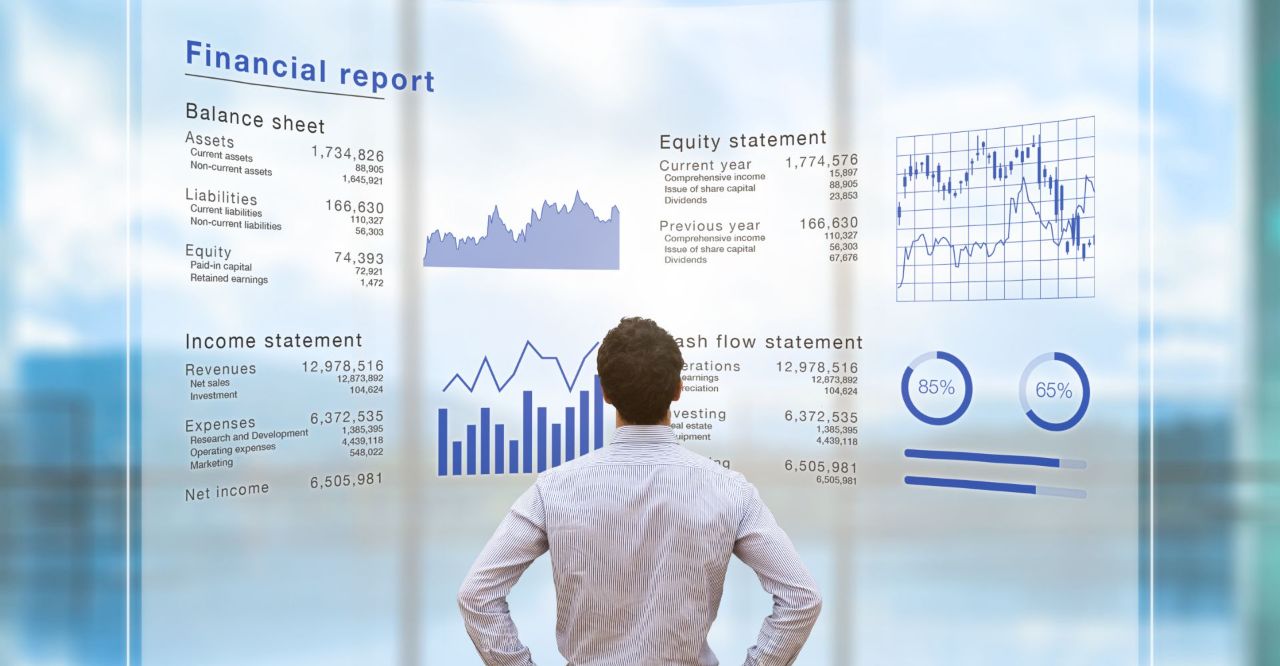As a Chief Financial Officer (CFO), it’s crucial to keep track of leading economic indicators in Singapore to gain valuable insights into factors which can greatly influence your business fortunes in the coming year.
For example, ongoing trends apparent in certain indicators might help CFOs like yourself anticipate changes in interest rates, and adapt the financial strategies of your business accordingly. Being able to foresee potential financial risks can inform your scenario planning accordingly, and knowing which factors can impact the overall economic climate can influence every aspect of your business from financial planning to risk management.
But which economic indicators should you, as a CFO, keep tabs on? And where can you go to find the data on each indicator in the first place? We recommend that you do so on Trading Economics, a website which tracks the data of economic indicators from the official sources of more than 196 countries, including Singapore.
To confirm the data provided by Trading Economics, we’ve also cross-checked it against the statistics provided by the World Bank. Let’s take a look at the economic indicators which CFOs like yourself should watch, and why.
1. GDP of Singapore’s Economy
%20(1).png?width=1000&height=490&name=GDP_SG%20(1)%20(1).png) Singapore Q4 2024 economic performance; Source: The Straits Times
Singapore Q4 2024 economic performance; Source: The Straits Times
The first, most obvious indicator that you as a CFO should watch is, of course, the Gross Domestic Product (GDP) of Singapore. By keeping track of its year-on-year (YoY) growth, you can quickly gauge the overall economic health and performance of the country – such as, for example, the more optimistic outlook for 2024 after the economy grew faster than expected in Q4 of 2023.
This helps you keep track of how well the economy is growth, or even note any warning signs that it is contracting; which, in turn, will have certain impacts on your business arising from market volatility, changing consumer behaviours, and other external factors.
With this information in hand, you can make effective forecasts of your business’s profitability in the coming year, and make informed decisions accordingly when it comes to planning and budgeting for your business.
Where To Find The Chart For Singapore’s GDP
2. Foreign Direct Investment (FDI)
%20(1).png?width=1000&height=488&name=FDI%20(1)%20(1).png) Overview of FDI from Jan 2021 to July 2023; Source: Trading Economics
Overview of FDI from Jan 2021 to July 2023; Source: Trading Economics
Another economic indicator that you, as a CFO, should be watching is the foreign direct investment (FDI) into Singapore’s economy. This is an especially important indicator to monitor as Singapore positions itself as an investment destination, and thus it’s a good way to gauge just how much actual confidence foreign investors have in Singapore’s business environment.
A rising trend in FDI may indicate a favourable and attractive market for investments, and could signal an increase in business expansion, job creation, and increased economic opportunities. Conversely, a decline in FDI might be a sign of impending economic challenges, uncertainties, or shifts in investor sentiment.
As such, keeping an eye on the increase or decline of FDI in Singapore’s economy could help you identify potential opportunities for partnerships, collaborations or new markets for your business to expand, or alternatively to implement risk mitigation strategies in advance.
It can also help you understand how changes in government regulations, incentives, or economic strategies can impact Singapore’s FDI, and use this information accordingly to align the financial strategies of your business with ongoing government initiatives.
Where To Find The Chart For Singapore’s FDI
3. Inflation Rate
.png?width=1000&height=501&name=SG%20INFLATION%20(1).png) Singapore inflation rate in 2023; Source: Trading Economics
Singapore inflation rate in 2023; Source: Trading Economics
CFOs may closely watch inflation rates to assess the impact on costs and pricing strategies, crucial for maintaining financial stability and profitability
Keeping track of inflation rates is crucial for CFOs to assess the impact on costs and pricing strategies. It informs financial planning and helps maintain stability amid changing economic conditions
The overall inflation rate in Singapore’s economy is another economic indicator that CFOs like yourself should pay particular attention to, as it affects multiple decisions you would have to make in your capacity.
For example, you need to keep a close watch on current inflation rates to assess how it’s impacting your cost and pricing strategies. And because inflation alters the purchasing power of the Singapore Dollar, you also have to keep apprised of current inflation trends to manage your business’s cash flow efficiently, and ensure it can meet its financial obligations amidst changing economic conditions.
This in turn affects your budget planning and financial forecasting, for you need accurate data to adjust budgets, predict future expenses, and make informed financial projections to ensure your business remains financially stable and profitable.
You’d also need to account for inflation when evaluating the real return on investment (ROI) that investment options offer your business. It also impacts any existing debt your business holds, and you’d need to take it into accounting if and when you need to decide how to refinance or restructure your business.
Last but not least, inflation influences your financial reporting metrics. Therefore, you’d need to ensure that your financial statements accurate reflect the impact of inflation in its figures, so that your stakeholders get transparent and reliable information about the financial health of your business.
Where To Find The Chart For Singapore’s Inflation Rate
4. Balance of Trade
%20(1).png?width=1000&height=503&name=BOT%20(1)%20(1).png) Singapore Balance Of Trade 2023; Source: Trading Economics
Singapore Balance Of Trade 2023; Source: Trading Economics
Given how reliant Singapore’s economy is on international trade, it’s crucial that CFOs like yourself monitor the balance between imports into and exports out of Singapore. By monitoring changes in trade dynamics, you can get an insight into the economic competitive of Singapore, and anticipate potential impacts on your business in turn.
Especially for businesses which are heavily involved in international trade, the balance of trade directly affects their revenue and profitability. Therefore, as the CFO of such a business, you’d need to monitor the balance of trade to identify growth opportunities, and mitigate any risks associated with fluctuations in export and import levels.
Should the balance of trade skew unfavourably towards Singapore, it could indicate a greater dependence on imports, and thus highlight potential vulnerabilities in the global supply chain for the country. This could in turn pose a risk to your business, so as the CFO, monitoring the balance of trade can inform you of those risks, act in time to enhance the resilience of your business’s supply chains, and ensure the availability of critical resources.
Last but not least, monitoring the balance of trade can help CFOs like yourself identify overseas markets that have a strong demand for your business’s products or services, and thus guide your decision when it comes to regional expansion plans.
Where To Find The Chart For Singapore’s Balance of Trade
Keeping Track Of Economic Indicators Is Key To Your Role As A CFO
In conclusion, as a CFO, it is crucial to keep track of leading economic indicators in Singapore to gain valuable insights into the factors that can greatly influence your business fortunes. Websites like Trading Economics and the World Bank provide reliable data on these indicators, allowing you to stay updated and make accurate forecasts for your business.
By monitoring indicators such as the GDP, FDI, inflation rate, and balance of trade, and together with the full visibility into your business financials that an ERP software gives you, you can acquire a full picture of how external economic factors are likely to impact the profitability of your business, allowing you to make data-driven decisions when undertaking financial planning, risk management, and business expansion activities.
Through this, you can assist your CEO and fellow C-suite executives to make informed decisions that contribute to the success of the business in turn. To find out about how you can add value to the finance function of your business, click on the image below to learn more.




